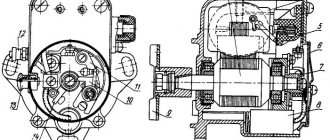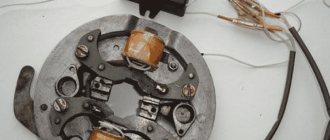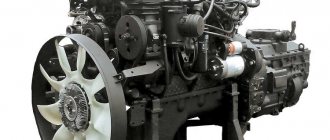As the vehicle is used, the engine gradually wears out. After several years of active driving, it begins to consume oil, problems with exhaust appear and vibration occurs at any speed. These are not good signs that indicate the presence of problems that need to be resolved as quickly as possible so as not to encounter more serious problems. One of the signs of wear is accumulated plaque on the inner walls of the cylinders and all parts. It reduces performance and degrades the quality of the engine as a whole. This condition is called coking. Let's look at the process of doing decarbonization with your own hands.
Why is decarbonization needed?
During operation, the engine becomes contaminated with fuel combustion products, and often with the fuel-oil mixture, because over time the tightness of the rings disappears and little of the block penetrates into the combustion chamber. As a result of this reaction, a hard black coating forms on the walls, which leads to additional problems. One of the many processes for restoring a power unit is engine decarbonization. As the name suggests, the procedure involves removing carbon deposits that interfere with normal operation. After this, the power unit works much better and produces more power. It is especially useful for those cars that have not undergone internal combustion engine repair for a long time, since the process is irreversible and plaque accumulates gradually day after day, month after month.
There are several technologies for decarbonizing engines, but each has its own nuances. Let's take a closer look at both so that you can choose the best method and whether it's worth doing at all. Maybe it’s better to carry out a major overhaul right away? In fact, it allows you to delay it by only some 5-20 thousand kilometers.
Risks
It’s understandable that there are positive changes, but there are also chances for negative developments? In addition to the predicted risks of contamination of spark plugs, catalysts and other things, there is also a non-zero chance of getting a piece of coke directly under the piston rings and a scratch on the cylinder bore. Or a large piece of carbon directly under the valve, which can lead to its failure or a collision between the valve and the piston. Fortunately, the chance of this kind of trouble is small, but you shouldn’t forget about this possibility.
About decoking with water, it is worth saying that when using it, the risk of water hammer is quite high, especially if the procedure is carried out carelessly. Many services simply do not take on this work if they are not confident in their abilities.
Decoking the engine or repairing it immediately
To decide whether to decoke the engine or repair it right away, you need to understand the nature of the origin of this carbon deposit. It is worth understanding that purely without disassembling it will not give an instant effect, because the plaque has formed over the years and is securely attached to the walls of the metal. To decarbonize the engine, you need to know the main reasons.
Regularly high temperature and blood pressure. It is under these conditions that the insides of the motor operate. As a result of friction between parts, gaps appear through which lubricant penetrates into the cylinder. The so-called oil burn begins. The oil burns and creates solid residues that settle on the part. All parts located along the path of oil and its combustion products are more covered with coke: walls, front surfaces of the pistons, outer edges of the valves, as well as the groove for the piston rings.
If your engine is burning oil, then know that it does not disappear into nowhere. You will definitely find traces of it on the walls of your engine parts. You should act quickly, because accumulated coke will lead to accelerated wear of the rings and depressurization of the cylinder. As practice shows, compression in such engines is reduced by up to 90%. If this happens, the cylinder can be considered failed. Timely decoking will avoid these troubles and extend the service life of the unit, but if such a problem has occurred, then a major repair will not have to wait long.
Why is it important to start acting as early as possible? The reason is that a chemical decarbonizer, which is added to the cylinders without disassembling, is able to cope with the task with an oil consumption of no more than 0.5 liters per 1000 km. But the use of chemistry alone is not enough. You need to find the place through which the oil penetrates into the cylinder. Most often these are valve seals.
Removing carbon deposits with water
Some motorists have learned to use a milder procedure that has the same effect in removing carbon deposits as chemicals. Decarbonization with water is the most common method that owners of domestic and imported cars decide to use.
For the procedure you will need:
- distilled water in a plastic bottle;
- dropper;
- hose (for windshield washer);
- tee (connect the washer).
The scheme of work is as follows: water from a bottle is connected through a dropper to the engine suction. You can use non-distilled water - the filtration system in the dropper itself will handle the cleaning. Water supply starts with the engine running - at approximately 2000 rpm.
2-3 drops per second is enough when the engine is idling when the engine is warm. The effect will not take long to appear, the carbon deposits are removed, and the car becomes dynamic and economical.
How to properly decarbonize
In stores and car markets you can find many different automotive chemicals to combat such problems. All sellers, of course, claim that their product copes better with the task. In reality, everything may turn out differently. We will consider exactly those methods and means that have positive reviews. These include:
- Mitsubishi Shumma – supplied in spray form;
- GZox – spray for spraying into cylinders through spark plug holes;
- Lavr – liquid for filling;
- BJ-211 – sold in liquid form.
With the help of all the listed drugs, decarbonization is performed without changing the oil, which is convenient, but what is the effectiveness? With a relatively small amount of deposits, the products are quite effective and cope with their tasks.
Diesel engine decarbonization
Due to the nature of the operation and the type of fuel used, ring decoking is often required on a diesel engine. This is due not only to the penetration of oil into the combustion chambers, but also to the presence of heavy fractions in the fuel itself. Therefore, this work is especially difficult in such power units. This procedure consists of removing carbon deposits formed during operation from engine parts.
Decarbonization of piston rings can be done independently or by specialists from a car service center. The only question is the timeliness of this procedure. The sooner the problem is identified and corrected, the less costs will be required to restore the power unit. If you discover something is wrong and decide to act on your own, then you can unscrew the engine using liquid or volatile agents sprayed into the cylinder. But it is worth knowing some peculiarities of working with this type of internal combustion engine. In order for soft decoking to be successful and without additional harm, it is necessary to dismantle the nozzles. At this stage, difficulties may arise, because not every car owner will have the necessary keys and accessories in the garage.
Still, the best decarbonization is possible only with complete disassembly of the unit, since you can get to absolutely all the secluded places where carbon deposits could be located. These include grooves for O-rings, valve seats and many others. Simply spraying the product will only slightly reduce its concentration, so it is recommended to carry out this procedure at the earliest stages of soot accumulation.
The work is performed as follows for both diesel and gasoline engines:
- First you need to unscrew the spark plugs from a gasoline engine or remove the injectors from a diesel engine.
- Engage fifth gear so that you can turn the crankshaft with all pistons in the middle position.
- One by one, you need to spray a carbon remover into each cylinder.
- Wait 8 to 15 hours, periodically turning the crankshaft so that the chemical penetrates into the area between the piston and the walls.
- After waiting the specified period, it is necessary to remove dirt using a syringe or other device and thoroughly blow it out with compressed air.
- Reinstall the spark plugs and start the engine. Effective operating time is 15 minutes at 1500 rpm.
- After cleaning, replace the spark plugs with new ones.
Rating of the best engine decarbonizers
There are a lot of tools on sale for stripping engines. During the period of servicing motors of different power and types, a certain list of the best ones was identified, which you can also use. All of them can be divided into three types depending on consistency:
- foam;
- aerosol;
- liquid.
All have their own advantages and features. Let's take a closer look at each type.
Top foam decoking of piston rings
Decarbonization is an unpleasant procedure because the parts are located deep in the engine. Getting to them is not so easy, and all chemicals act unnoticed by the eye. But with a small amount of carbon deposits, they are quite effective in cleaning oil scraper rings. After this procedure is carried out in a timely manner, the engine runs noticeably better.
Can you highlight the TOP best products that clean piston rings well?
- Lavr complex;
- Mitsubishi shumma engine conditioner;
- G zox injection carb cleaner;
- Lavr express.
Cleaning the piston with such preparations can significantly extend the life of the internal combustion engine and alleviate the worries of car owners.
Lavr complex
Many professionals perform early decarbonization using Lavr complex. The drug is sold in spray bottles. Shows high efficiency even after one application. Quickly dissolves carbon deposits and restores compression.
Mitsubishi shumma engine conditioner
This chemical is considered one of the best, but to achieve maximum efficiency it is better to use it for a mileage of up to 40 thousand km. The sooner, the less carbon deposits and the likelihood of reduced compression. The active formula quickly dissolves dirt even in the most inaccessible places. Sprays using a long tube.
G zox injection carb cleaner
Another foam cleaner for the chamber, throttle valve and all the insides of the engine. The product is sold in a convenient bottle with an injection tube. It is recommended to use every 10 thousand km. Should be used on a well warmed up engine.
Lavr express
A chemical product called Lavr express is excellent at removing oil stains. It is one of the simplest means for removing deposits that have formed on internal combustion engine parts. Penetrates into all crevices and helps remove deposits to the surface using active foam. Easy to apply, just spray.
Wynn's Combustion Chamber Cleaner
High-quality decoking helps to carefully remove carbon deposits, varnish deposits and sludge carbon formations in the CPG of gasoline engines only. The substance helps restore the mobility of oil scraper rings, as well as compression rings, and clean the intake manifold with valves. The product does not have a negative effect on the catalyst. The unusual use of the substance surprises car enthusiasts - it is supplied through the engine vacuum hose, but the high efficiency of the product is noted by equalizing compression in the cylinders, reducing vibrations and eliminating engine detonation. Many users note a minimal level of oil consumption, as well as a significant increase in engine power. The cleaning process does not require lubrication and practically does not harm the motor, since there is no contact with the rubber seals of the engine.
The best liquids for decarbonizing engine piston oil rings
Oil stains on 16 valve and other engines are effectively removed by various liquid preparations. The agents are injected into the cylinders, but for the necessary effectiveness of their action, the shaft must be periodically rotated so that it penetrates into all the cracks. The liquid is very fluid, but upon action it forms foam, which lifts dirt.
Vmpavto raskoksoil valera
This product is a universal chemical because it can be used to quickly wash the entire interior and oil system. Thanks to it, the rings quickly come off and begin to perform their functions.
Lavr innovator
An inexpensive and effective product for removing carbon deposits from walls. It uses a new formula that effectively dissolves plaque and destroys deposits. Helps increase compression by more than 25%. The substance is used not only for cleaning, but also for diagnostic testing of the condition of the cylinders. Maximum efficiency is achieved when the internal combustion engine is heated to 70 degrees. Dissolves carbon deposits in severely neglected situations in just 60 minutes.
Bg109
It does a good job of removing carbon deposits on the pistons of a BG 109 car. It is sold in the form of a liquid product that can be added to the cylinders using a syringe. Can also be used as a supplement. It is poured into flushing or used oil on a warm engine. To remove carbon deposits, let it run for 15 minutes at 1500 rpm. After the procedure, change the oil and filter.
Rimet
An effective flushing agent to combat deposits. Contains an active formula of copper, tin and antimony. The mixture increases compression, reduces wear by almost 50% and promotes sliding of parts. Used for engines with mileage up to 60 thousand km.
Phenom
A Russian-made product for removing carbon deposits from the piston pair, rings and valves. The product helps to extend service life and increase power. The chemical has 50 international performance awards. They are the most knowledge-intensive in production.
Runway valve cleaner
Any oil stain will be quickly eliminated with a professional Runway product. This is a line of auto chemicals that has shown good results. Sold as an oil-like liquid. Helps dissolve carbon deposits and soot. Restores the mobility of the rings, and at the same time compression.
The best 5 minute engine flush kit
If you want to quickly refresh the engine of your car, then choose Lavr ML202. Sold in bottles of 185 and 330 ml in liquid form. It is used only on a hot engine. The optimal temperature is 70 degrees. It is poured directly into the cylinders using a tube. To activate the effect, you must close the holes tightly.
Decarbonizer Lavr
If the engine oil disappears, Lavr will help solve this problem. Today, these are the fastest drugs that eliminate any deposits without disassembling the internal combustion engine. It is enough to pour it into the cylinders and wait, then remove it with a syringe and let it run at idle for several minutes.
Folk remedies for decoking
In addition to chemicals, craftsmen have learned to use various folk remedies to decarbonize rings on Lada Priora and other domestic cars. Old-fashioned methods are quite effective, so they are used by some car enthusiasts. Let's look at the most popular ones.
Decarbonization with kerosene and acetone
As practice shows, a mixture of kerosene and acetone in a ratio of 1:2 or 1:3 effectively removes oil stains. 50 g is poured into all cylinders. The engine should be left in this condition for 10 hours. During this time, the product will dissolve the plaque and turn it into a liquid mass. After this time, it is necessary to rotate the crankshaft to thoroughly rinse all surfaces and remove the waste using a tube with a syringe.
Dimexide
Another means for decarbonizing piston engines is dimexide. Surprisingly, the medicine helps eliminate plaque. To carry out the procedure, you will need 5 bottles of 100 ml each. Used on a warm engine at 50 degrees. into each cylinder. 5 minutes are enough to dissolve deposits. Be sure to move the crooked starter so that the liquid washes all surfaces.
Stove cleaner
Also among the chemicals for cleaning the engine from carbon deposits, when it is already noticeably eating oil, is a stove cleaner. Everyone has effective household chemicals, but they do their job well. It is used similarly to Dimeskid. But the best effect can be achieved if you disassemble the piston and soak the parts separately in the product.
Causes of carbon formation.
If there are means for decoking, then the piston rings and the engine are coked. Coke or deposits are an inevitable part of engine operation. This primarily concerns idle speed when the engine warms up. At this point, when the engine temperature has not reached operating characteristics, tar deposits form. This happens due to incomplete combustion of fuel. The situation is aggravated when the car is used for short trips. Started the engine, warmed it up a little and hit the road. And many people completely neglect this procedure. Moreover, the distance from home to work is several kilometers. Driving a cold engine for short distances promotes carbon formation and coke deposits. The next reason on the list is traffic jams. And the engine operating mode is close to idle. The reasons should also include the quality of the oil and the timing of replacement. By the way, let’s say that the oil change period should be taken into account not by mileage, but by engine hours. In terms of mileage, it may still be too early to change the oil, but in terms of engine hours, it has become old for a long time. This means that the base additives have worked together and the performance characteristics of the oil do not meet the requirements. So, summary: carbon formation and coke deposition are affected by:
— fuel — trips on a cold engine — frequent trips over short distances — engine operation in traffic jams — quality and timing of oil changes








